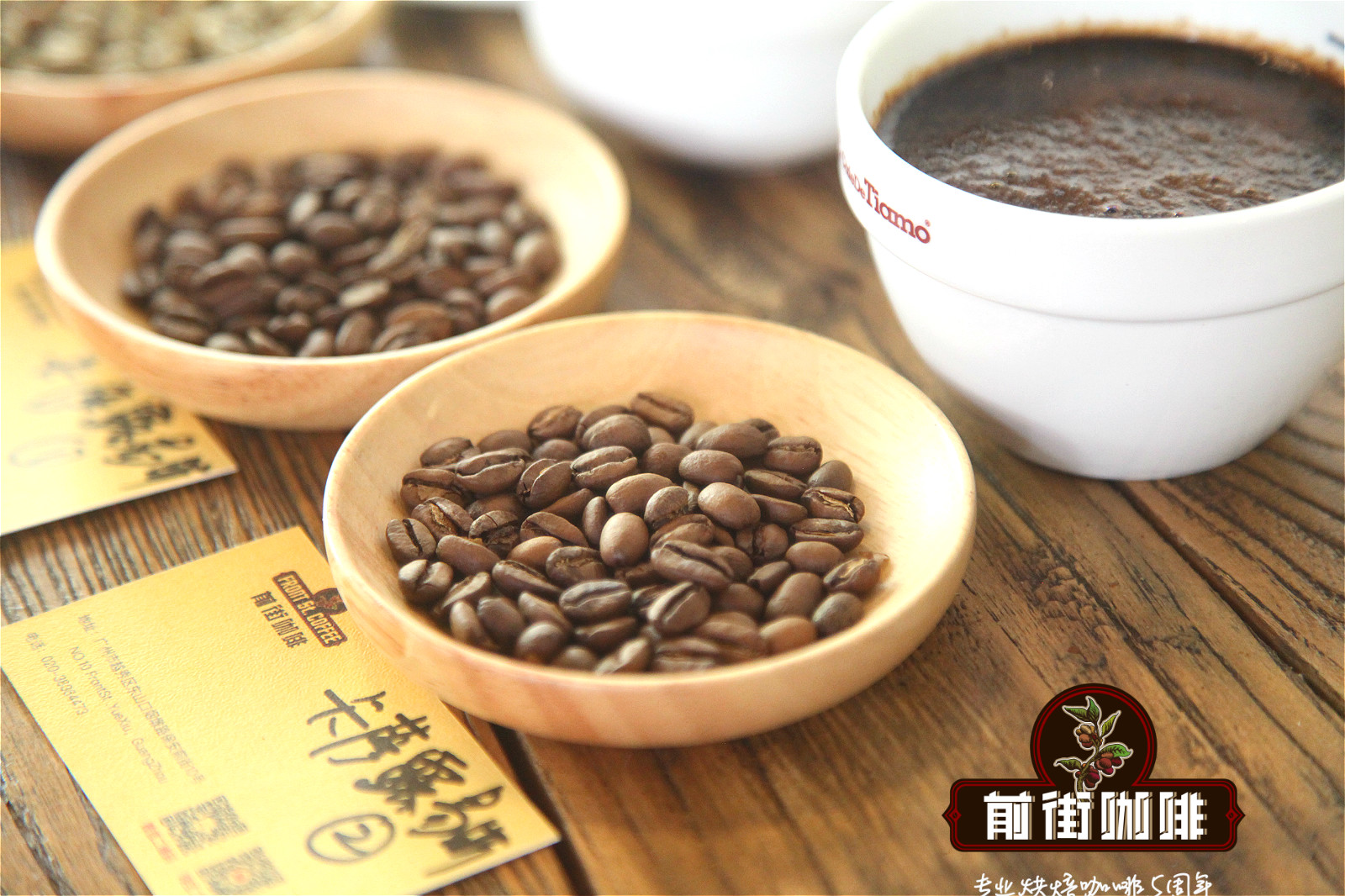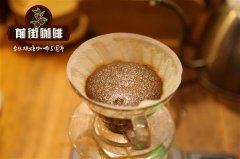Mexican coffee production and flavor description Mexican coffee hand brewing practices

Professional coffee knowledge exchange more coffee bean information please follow the coffee workshop (Wechat official account cafe_style)
[preface]
Mexico is located at the northern tip of Central America, bordered by the United States to the north, the Pacific Ocean to the south and west, the Caribbean Sea to the southeast, Belize and Guatemala, and the Gulf of Mexico to the east. It is the fourth largest coffee producer in the world and a big producer of organic coffee, with an annual output of about 5 million bags. Most of its coffee is produced by nearly 100000 small farmers, and large estates that once manipulated the coffee industry are rare. Mexico produces about 630 kilograms of coffee per hectare, and Mexico is currently the leading coffee supplier in North America.
Generally speaking, Mexican coffee has a light flavor, but it is mild and delicate.
[history]
Coffee arrived in Mexico very late. In the second half of the 18th century, Spanish immigrants brought coffee trees from Cuba and Dominica in the Caribbean, but it did not really grow coffee commercially until the 1790s, when Germans and Italians emigrated from Guatemala and Central and South America to Mexico, and Veracruz first appeared coffee plantations. Mexico has always maintained the tradition of small farmers. The agricultural reform after the Mexican revolution allowed aborigines and farmers to own small plots of agricultural land and be self-sufficient. The 1970s and 1980s were the golden age of Mexican coffee. In 1973, the Mexican National Coffee Institute (INMECAFE) was established to provide technical assistance to small farmers, loans, guaranteed acquisitions, and even in line with the international market, resulting in an increase in coffee output.
Later, the Mexican Coffee Association (Instituto Mexicanodel Caf é, or Inmecafe) took control of the coffee industry. The Coffee Association controls both coffee cultivation and the market for coffee beans that can be exported since November. The association provides farmers with minimum purchase prices, technical advice and other assistance. However, since 1991, the Coffee Association's activities have been reduced and its functions are likely to be further weakened.
The collapse of the coffee agreement (Coffee Agreement) and the disappearance of price support have actually helped some producers by forcing them to develop their own brands and gain closer ties with foreign markets, while the NAFTA agreement between Canada, the United States and Mexico will further help Mexican products export to North America. Some people think that the best giant coffee beans are made in Mexico rather than Guatemala, but the supply and quality of coffee beans in both places can vary. The coffee beans, known as Maragogype, are large-grained and produce coffee that is smooth, mellow and fragrant. The poverty of farmers has caused most coffee to grow under natural conditions, that is, without the use of chemicals such as insecticides or fertilizers.
[producing area]
The uppermost edge of the coffee production belt is the coffee producing areas of coatepec (Cortepe) and veracruz (Veracruz) in the north of Mexico, Pluma coffee in the Oaxac (Oaxaca) region in the middle, and Chiapas (Chiapas) highlands on the border with the Vivette Nan Fruit region in Guatemala. The vast majority of Mexican coffee is washed Arabica coffee, which is characterized by a very strong special aroma, a bit like overfermented fruit. Chiapas (Chiapas) beans at the southernmost tip of Mexico have a mild and delicate taste and a very special aroma.
* coatepec (Koteppe):
1200m above sea level, mainly planted with bourbon and iron pickup, the taste is sweet, slightly grassy, slightly sour and greasy.
* (Huatusco) Huatusco:
1200-1500m above sea level, with slight acidity of plums, strong caramel sweetness and dark chocolate finish.
* Oaxaca (Oaxaca) Pluma coffee:
Most farmers in the Oaxaca Oaxaca producing area own less than 2 hectares of land in this area and have several large cooperatives. There are also some larger estates, although some have developed diversified tourism. 900-1700m above sea level, from December to March, growing bourbon, iron pickup, Kaddura, elephant beans. At the same time, it also produces high-quality coffee beans, of which Plumakoyce Pluma Coixtepec coffee beans grown in natural conditions are the best, as well as Altura Orisaba Altura Orizaba coffee and Altura Vatusco Altura Huatusco coffee.
* Chiapas (Chiapas):
1100 meters above sea level, 1400 meters above sea level, harvest period from December to April. In the early 1990s, the southern state of Chiapas became the most important coffee-producing region in Mexico, producing about 275000 tons of coffee a year, accounting for 45 per cent of the country's production. More than 2 million of Mexicans depend on coffee for a living, and 75 per cent of Mexican coffee farmers work on less than two hectares of land. These small farmers produce about 30 per cent of the country's coffee each year, while the rest are produced by large or high-capacity farms.
Chiapas is an important high-grade coffee producing area in Mexico, and the main high-grade beans are grown in high-altitude areas. On the other hand, many high-altitude beans of organic Mexican coffee are grown by aborigines, and these aborigines have organized a number of cooperatives to obtain assistance from foreign organizations, to strive for better prices, and to promote the progress of coffee planting technology, and so on. And organic cultivation is adopted to grow coffee. Coffee varieties grown include Tapanchula and Huixtla.
Founded in 1995, OPCAAC (whose full name is Organizaci ó n de Productores de Cafe de Á ngel Albino Corzo is an organic smallholder production organization in Chiapas) constructs a farm management system that emphasizes the open and transparent independent production and marketing information of coffee farmers and sets standards to avoid over-exploitation of land. The organization provides its members with assistance in micro-loans, technical training, social activities, etc., and continues to pay attention to the development of organic agriculture and ecological protection. OPCAAC aims to create the value of the local coffee industry and improve the quality of life of local farmers through fair trade and eco-friendly agricultural production.
Chabas coffee has a moderate consistency, mild but sweet flavor, dry aroma with banana and cocoa nut aromas, wet aroma with obvious honey-like sweet aroma, and walnut, almond aroma, the most obvious taste is sucrose-like flavor, if the roasting degree is not deep, you can also feel a light lemon flavor, mild but slightly short tail, is a light. Sweet, approachable coffee.
[famous Manor]:
* Cold Canadian Manor in Mexico (Ca ñ ada Fri í a)
The manor is located in the alpine valley (Huatusco-Xalapa, Axocuapan community) of Huatusco Charapa Asupa district. The cold season drives straight into the cold wind from the north, and the place name of this valley is called "Cold Canada]. Jose Daniel bought a piece of farmland here 16 years ago, when there was nothing here and it was a primeval forest. About 10 years ago, after his coffee was harvested, it was usually sold to the processing farm, and the price offered by the buyer was very low, which made him think of selling the manor from time to time, but he always thought that the quality of his coffee should be very good, but he could not argue with the buyer, and there was nothing he could do about it. until the coffee-related activities six years ago, he took part in a coffee exchange activity between the cup tester and the bartender, and the other party promised to test his raw beans. His coffee was highly rated, and after that, he learned that the Zhuoyue Cup Coffee Competition, specially selected the best batch to participate in the competition, won the national runner-up! Finally opened the popularity, but also let Lenglie Canadian manor's reputation gradually come to the fore.
Cultivated varieties: 40% Typica iron pickup, 10% Borbon bourbon, 20% pacamara Pacamara, 10% Red Caturra red Kaddura, 10% Yellow Caturra yellow Cadura, 10% Colombia Colombia. The palate is thick and touchy, clean, sweet, juicy, chocolate, tea tree essential oil, sweet spices and a long and full finish.
* Casadra Manor (Rivas Family/ Kassandra):
Has the international rainforest certification, 2015COE second place, 2017COE second place. The estate is located in Veracruz, where coffee was first grown in Mexico. The owner, the Rivas family, has retained 27 acres of rainforest in the park to house birds and wildlife, and large-scale tree planting projects are still under way. Grow Kaddura Caturra with fruity, walnut, milk chocolate and sweet citrus flavors.
* Triumph Manor (El Triunfo):
At 1100-1200 meters above sea level, the area where the Triumph Cooperative is located is among the best in the world in terms of the rich diversity of species ecology. Coffee trees planted in shade (Shade Grown) are one of the characteristics of triumphant farmers' cooperatives, and also have relevant marks such as fair trade and organic certification. The scope of coffee trees planted by farmers is a buffer zone with ecological reserves.
The triumphant cooperative established in 2001 has more than 260 small coffee farmers. Located in the Chiapas-producing area of Siyeramadu Highland, the Triumph Ecological Reserve is one of the richest original forests in the world and is surrounded by years of alpine clouds, which is the best habitat for thousands of species of animals and plants. In this original forest, which is still wild and mysterious, you can even see towering trees as high as 90 meters, as well as surface vegetation occupied by tree fern vines, and even delicate wild orchids live quietly. Here, you can find more than 120 species of birds, all of which live in this native forest, which can be said to be a paradise for bird watchers.
[variety]:
Coffee in Mexico is mostly grown in mountains and tropical or subtropical forests at an altitude of 600 million meters above sea level, while aborigines grow coffee in traditional agroforestry. Coffee is grown among a variety of native trees, and the ecosystem is close to forest. Bourbon Bourbon, Kaddura Caturra, New World Mondo Novo and iron pickup Typica are the main products, and the giant coffee beans (Maragogype elephant beans) are represented by Liquidambar MS coffee beans, which are famous for their mellow and round taste.
[treatment]: washing treatment
1. Choose beans:
Put the harvested fruit in a water tank and soak for about 24 hours. At this time, ripe fruit will sink, while immature and overripe fruit will float up and can be removed.
2. Remove the pulp:
Use a machine to remove the peel and pulp, leaving only coffee beans wrapped in endocarp. At this time, there is a layer of mucous membrane on the outside of the beans, and the process of washing is to wash this layer of mucous membrane.
3, hair alcohol:
The adhesion of the mucous membrane is very strong and is not easy to remove. It must be placed in the slot for about 18-36 hours to make it alcohol and decompose the mucous membrane. There are two methods of fermentation, namely wet hair alcohol and dry hair alcohol, as the name implies, the former adds water, the latter does not add water. In the process of producing alcohol, the seeds and internal pulp will produce special changes, which is one of the steps that most affect the flavor of coffee. Some farms add hot water or alkanolins to speed up the production of alcohol, which has a negative impact on quality and is not popular with selected coffee lovers.
4, washing:
Farms that use the washing method must build washing ponds and be able to introduce an endless supply of running water. During the treatment, the finished beans are put into the pool and passed back and forth, using the friction of beans and the power of running water to wash the coffee beans until smooth and clean.
5, dry:
After washing, at this time, the coffee beans are still wrapped in the pericarp with a moisture content of 50%. They must be dried to reduce the moisture content to 12%, otherwise they will continue to be mellow, moldy and rotten. The better treatment is to use sunlight to dry, although it will take 1-3 weeks, but the flavor is very good and very popular. In addition, machine drying is used in some places, which greatly shortens the processing time and makes the flavor not as good as that of sun-dried coffee.
6, shelling:
The dried beans can be stored in a warehouse or handed over to the factory for shelling to remove endocarp and silver film.
7, selection and grading:
Like tanning hair, washed coffee has a process of picking and grading, which is used to remove defective beans and ensure better quality, which is then handed over to exporters to sell around the world.
[classification]: grade is determined by elevation
Level: name
SHB = Strictly Hard Bean very hard beans
GHB = Good Hard Bean good hard beans
HB = Hard Bean hard beans
Pacific normal level
[recommended for cooking] take Mexican organic Chiapas as an example:
Filter cup: Hario V60
Water temperature: 89-90 degrees
Degree of grinding: small Fuji 3.5 (Chinese standard No. 20 screen pass rate 64%)
Cooking methods: the ratio of water to powder is 1:15, 15g powder, the first injection of 25g water, 25 s steaming, the second injection to 120g water cut off, waiting for the powder bed water to half and then water injection, slow water injection until 225g water, extraction time about 2:00
Analysis: using three-stage brewing to clarify the flavor of the front, middle and back of the coffee. Because V60 has many ribs and the drainage speed is fast, it can prolong the extraction time when the water is cut off.
Flavor: soft berry aromas, sweet aromas of nuts, chocolate and sugar, creamy taste, solid texture and overall balance.
Related recommendation: is hand-made coffee really good? Why does coffee smell better than it tastes?
Important Notice :
前街咖啡 FrontStreet Coffee has moved to new addredd:
FrontStreet Coffee Address: 315,Donghua East Road,GuangZhou
Tel:020 38364473
- Prev

Sidamo candlelight hand-brewed coffee tasting how to make a cup of flavored candle
Professional coffee knowledge exchange more coffee bean information Please follow the coffee workshop (Wechat official account cafe_style) [Preface] A few days ago mentioned seven ways of brewing [Jamaica Blue Mountains], can be applied to brewing [Sidamo candlelight], but not all methods are suitable for making candles, why do you say so? First of all, you need to understand the characteristics of candles: 90 + is not
- Next

The characteristics of Blue Mountain Coffee how to distinguish between true and false Blue Mountain
Professional coffee knowledge exchange more coffee bean information please follow the coffee workshop (Wechat official account cafe_style) [preface] when it comes to drinking coffee, many friends will immediately say, give me a cup of Blue Mountain. Jamaican Blue Mountain Coffee has a high reputation, low production and a long history. It can be said that even if you have never tasted boutique coffee, you have heard of Blue Mountain Coffee. Blue Mountains are often seen in the market.
Related
- Detailed explanation of Jadeite planting Land in Panamanian Jadeite Manor introduction to the grading system of Jadeite competitive bidding, Red bid, Green bid and Rose Summer
- Story of Coffee planting in Brenka region of Costa Rica Stonehenge Manor anaerobic heavy honey treatment of flavor mouth
- What's on the barrel of Blue Mountain Coffee beans?
- Can American coffee also pull flowers? How to use hot American style to pull out a good-looking pattern?
- Can you make a cold extract with coffee beans? What is the right proportion for cold-extracted coffee formula?
- Indonesian PWN Gold Mandrine Coffee Origin Features Flavor How to Chong? Mandolin coffee is American.
- A brief introduction to the flavor characteristics of Brazilian yellow bourbon coffee beans
- What is the effect of different water quality on the flavor of cold-extracted coffee? What kind of water is best for brewing coffee?
- Why do you think of Rose Summer whenever you mention Panamanian coffee?
- Introduction to the characteristics of authentic blue mountain coffee bean producing areas? What is the CIB Coffee Authority in Jamaica?

